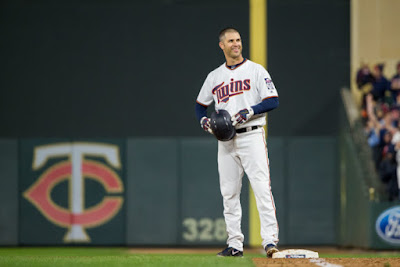This offseason has caused plenty of angst amongst Twins
fans. While the team has gotten substantially better, there’s plenty of
resources going unused. While the bullpen still seems to be chief among the
remaining issues, it can be argued that the rotation leaves some to be desired.
When it comes to the overall effectiveness of the starters, a massive wild card
exists in the form of Michael Pineda. For the Twins, they need the big man to
stand up.
Pineda was signed last offseason to a contract that
essentially boiled down to Minnesota monitoring his rehab and having the former
Yankees hurler ready to go in 2019. Coming off Tommy John surgery, Pineda then
suffered a knee injury late in the year that thwarted any possibility of a big-league
debut with the Twins. Now healthy and ready to go, Minnesota may have
themselves a difference maker ready to emerge.
Now 30 years old, Pineda was 28 the last time he was on a
major league mound. Throwing four seasons in New York, he posted a sub 4.00 ERA
just once. What’s worth noting however, is that despite a hiccup in 2017 prior
to blowing out his elbow, the peripherals were all plenty intriguing. From
2014-2016 Pineda posted a 3.42 FIP alongside a 9.2 K/9 and 1.8 BB/9. He did
cede 1.2 H/9, and that tally ballooned to 1.9 in 2017. Given the bandbox that
Yankees Stadium is, there’s reason to believe a move to Target Field could be
helpful.
Prior to bowing out of the 2017 season, Pineda got off to a
strong start. Through his first 10 outings, he posted a 3.32 ERA and owned a
.676 OPS against. It was four (of seven) starts from June on that led to an ERA
of 6.14 the rest of the way and turned his overall numbers into a much less
pleasing sight. What we can take from this though, is that things were on the
right track.
The former top 25 prospect can sling it, and he’s honed that
Yankee cutter in to the tune of a 94-mph average over the course of his career.
His pix mitch includes a sinker and slider that he pairs with a changeup as his
go-to offspeed pitch. Predominantly a fastball and slider combination, the 6’7”
righty looks to impose his will on opposing batters, and then force them to flail
at a pitch with movement.
There really hasn’t yet been a time in his career that
Pineda has consistently lived up to his prospect billing. He’s shown flashes in
small bursts, but largely been under a microscope of scrutiny with
organizations hoping for a bit more. Able to slot in behind at least Kyle
Gibson and Jose Berrios, while potentially pitching behind Jake Odorizzi as
well, Pineda can focus on being piece of the puzzle instead of the guy. An
emergence showing any semblance of one-time projected success would be a huge
revelation for Rocco Baldelli’s starting rotation.
It's understandable to have concerns about the Twins rotation.
Pineda is still a question mark until he proves otherwise, and Martin Perez is
a head-scratcher at best. The top three lay a strong foundation though, and if
the front office was right by banking on a monitored rehab process, Pineda may
end up being the surprise no one saw coming.












